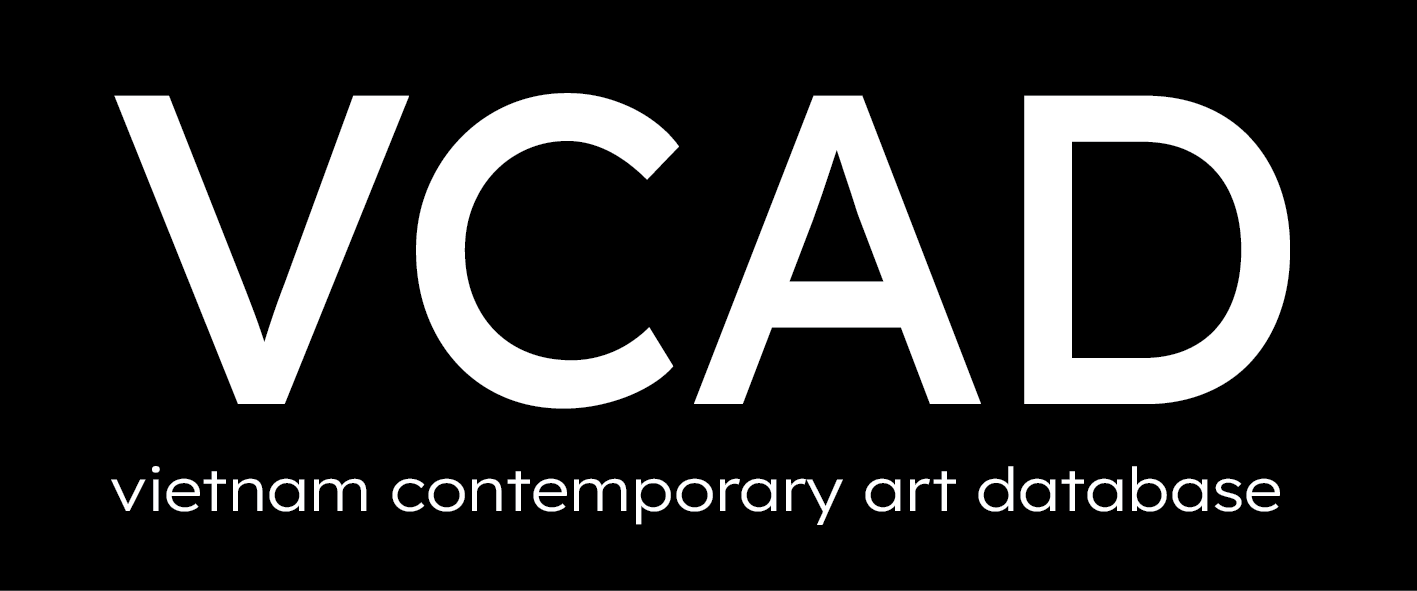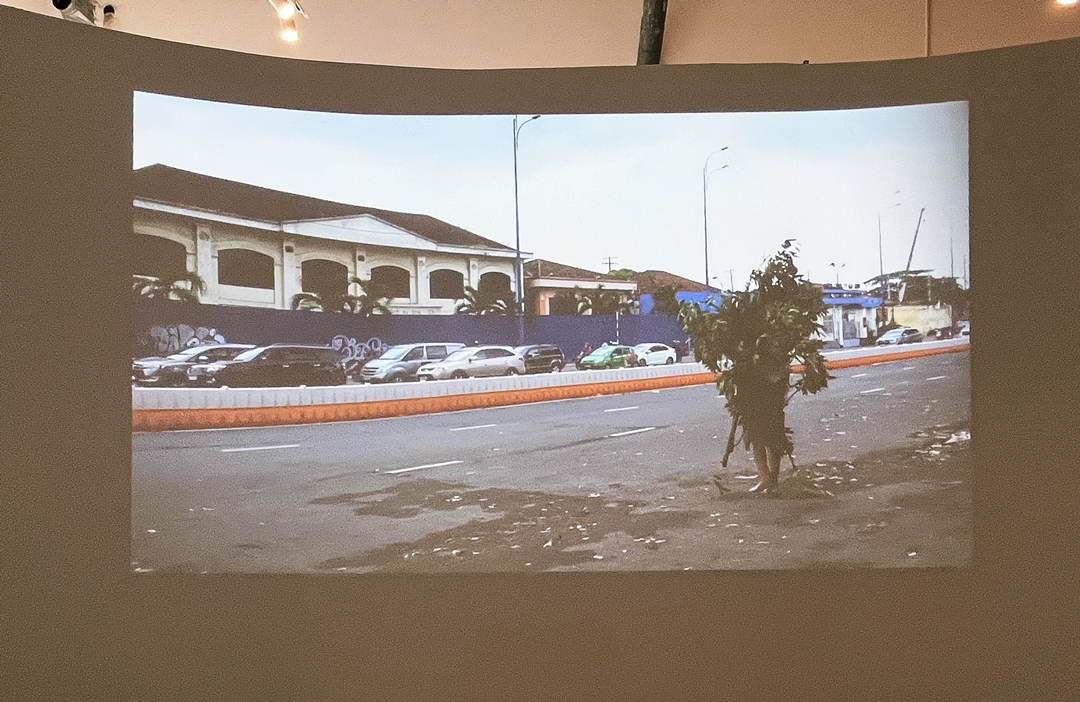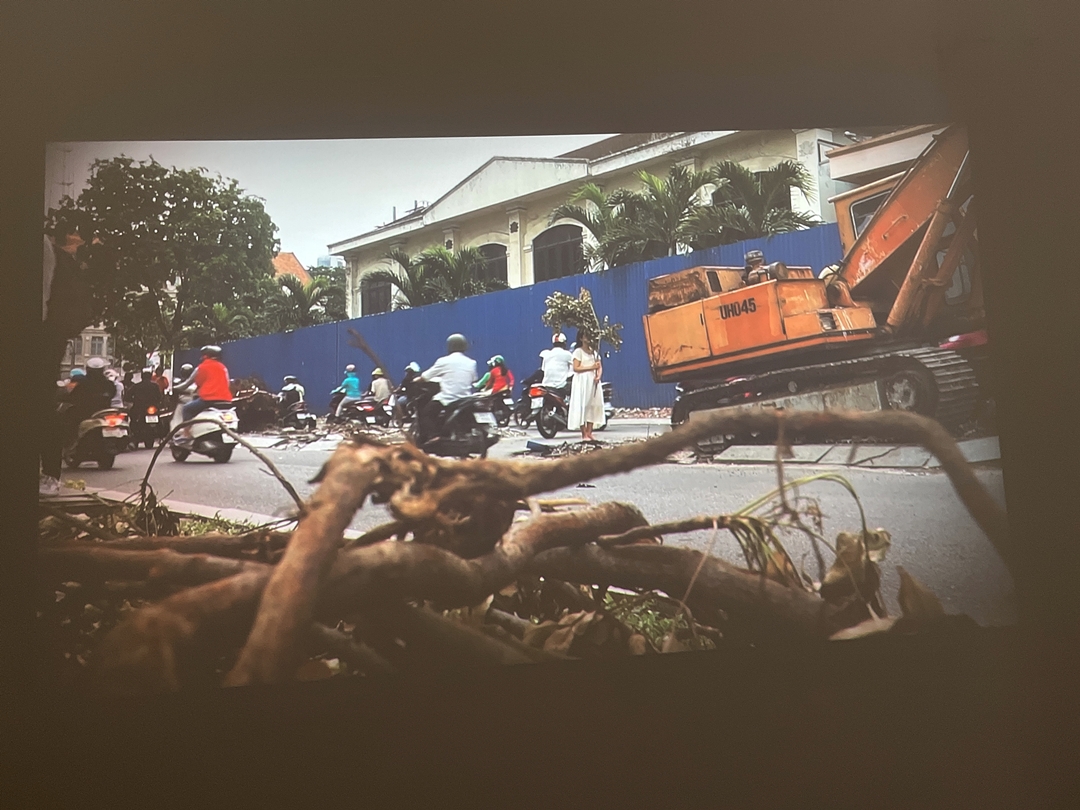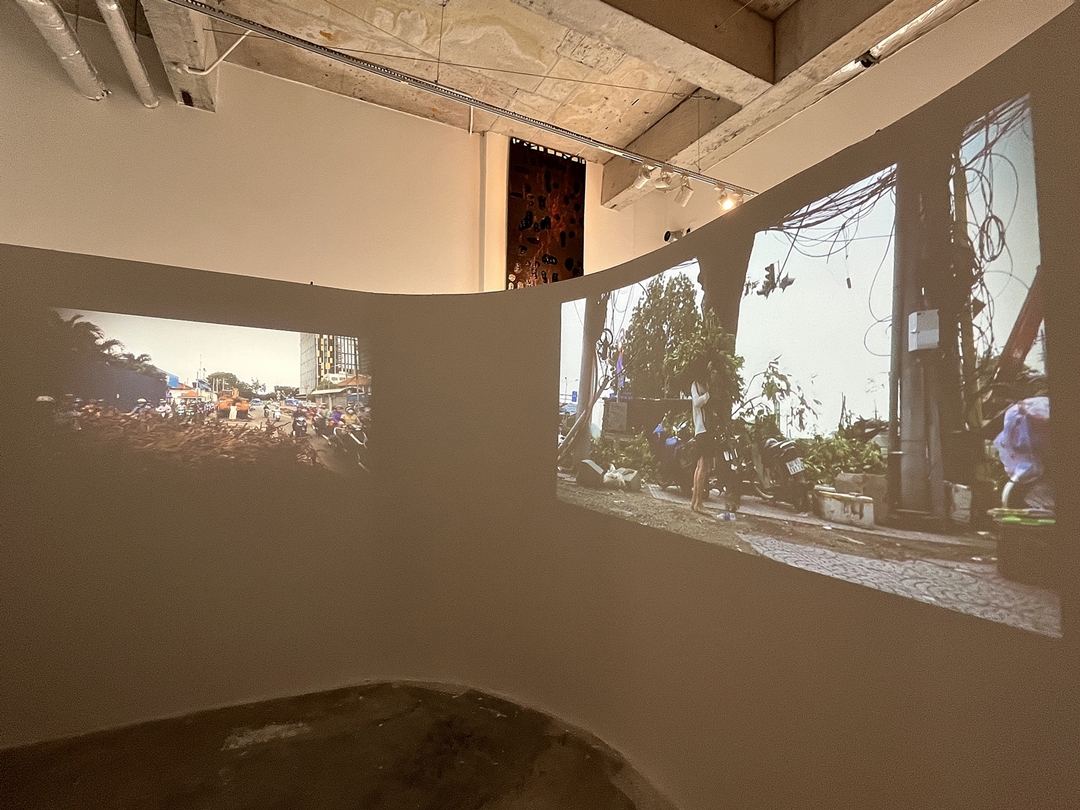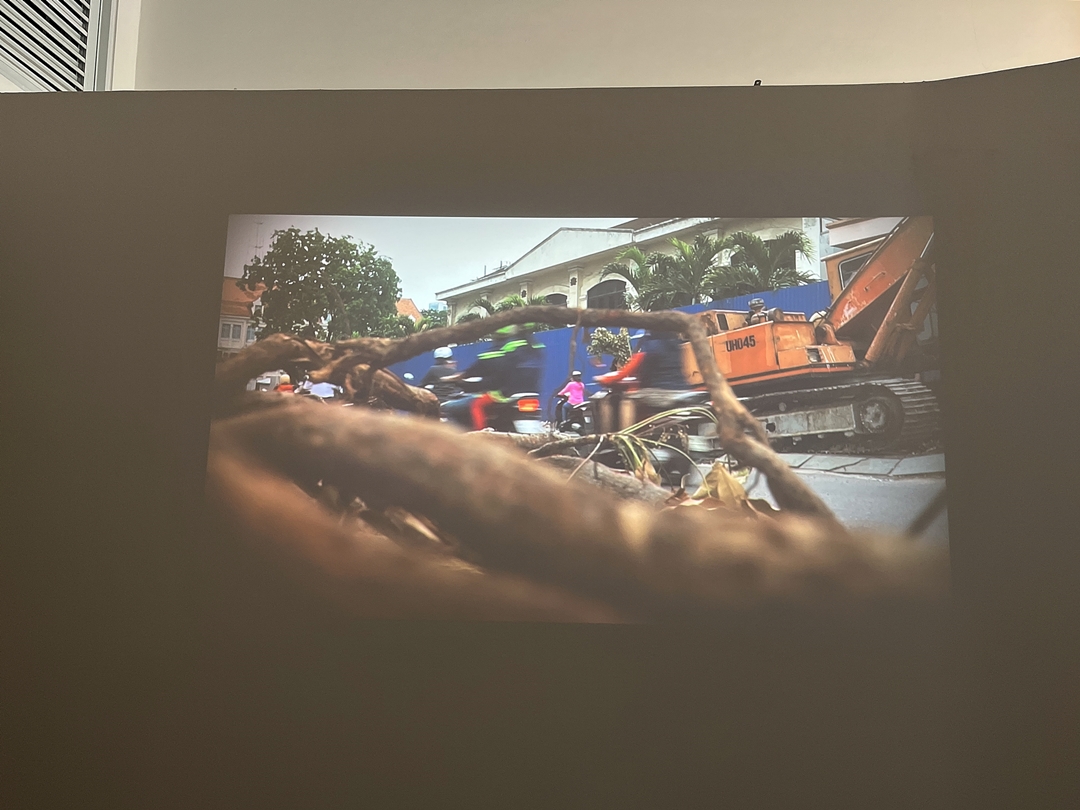Installation of 2-channel video of durational performances - 2018 by Ly Hoàng Ly at Tôn Đức Thắng street, Ho Chi Minh City.
Exhibition edition at Sàn Art - 2023.
Video installation variable.
Videographers: Trịnh Vĩnh Phúc, Phạm Duy Quang, Võ Thanh Phong, Bùi Thị Mỹ Tuyền, Cao Thị Như Nguyện.
Production Assistant: Cao Thị Như Nguyện
Volunteers: Võ Thị Thanh Tuyền, Bùi Thị Mỹ Tuyền, Trọng Nghiêm.
Description
Similarly to Hope - memory tree, there are also several ways to read a performance: based on the methodology or looking for meaning, through the role of the viewers or through the eyes of the participants, using semiotics or reading through the flow of history and, therefore, art and religion, looking at space, and time or even, from an intertextual relationship to other materials.
What can we see from a series of durational performances in So, we became machines? In 6 of the 7 performative situations, the performer keeps her body statie, sometimes lying on the road, sometimes standing next to the excavator, sometimes standing on a tree stump, sometimes standing under a tree root that had just been uprooted. Movement, if any, is kept minimal. Thus, the artist builds a monument with her body and, over time, also makes her presence invisible. If the central image (the performer) and the central action (the performance) deviate from expectations, that is, there is no predetermined dramatic event, then what can one read from the work? First of all, perhaps we should start by focusing on looking - seeing - listening - feeling. A performance creates optical and sound situations; in durational performances, they are also the passage of time and the opening and changing of space3. Purely optical and sound situations, according to Deleuze, promote an active seeing while situations guided by actions tend to lead to the passive visual function (pragmatic visual function), the viewer is forced to sit and watch. Because the performances are also rendered into video channels, viewers here are basically divided into two groups: direct at the performance site and indirect through the recorded documentations.
At the site, the audience (except for the artist's friends who came to support and help record) became reluctant and passive viewers. They look, discuss, confront, or ignore. Who are they? Passersby, people living and doing business nearby, people on duty to cut trees, and... the police. Their encounters or confrontations can last a few minutes, a few hours or a whole day. They are aware of their position as spectators, and unintentionally play the role of passive spectators with the passive visual function, here, they can expect an action, a reaction, or an event to happen. Perhaps, except for paid police officers or those who make their living on the streets, hardly anyone takes the time to watch these performances till the end. The time of the work is therefore encapsulated from the beginning to the end of the performance: one day, one year. From this perspective, the performance space is also encapsulated in the artist's private bubble, and interactions, if any, with this sphere.
Audiences who watch the performance indirectly through video documentation experience another time and space outside the work. Here, the time of the work lies between and beyond the performances. The space of the work is no longer a bubble containing the artist and her movements. It is more complex, and is made up of a series of complex, neither homogeneous nor predetermined movements from passers-by, people making a living around, the tree-cutters, and the tree itself being cut down. Thus, reluctant audiences become performance participants within this indirectly rendered space. What is the difference between these indirect audiences and the live viewers? Indirect audience are not only aware of their audience position but also aware of the interchangeable roles from audience to participants within the video documentations. They realised that those reluctant performance participants experienced immediacy, perhaps even more than what was shown in the lens.
In the only performance in which the artist's body is in a dynamie state, the time and space of the work are continuously (re)created by successive actions and reactions. Now, more clearly, the participants are the ones who immediately react, confront and interact with the artist. Viewers (directly and indirectly) place expectations on events that unfold through successive responses. If in the static performance series, the artist's presence is a negative space, created by movements and external impacts, then in the dynamic performance series, her presence is radiated through the initiative of the artist; at this time the spatial order is arranged through improvisation, it is shared and contributed by many different performers at the same time.
Description is excerpted from "Poems of the sky" Exhibition Booklet, 2023, p.9-13.
